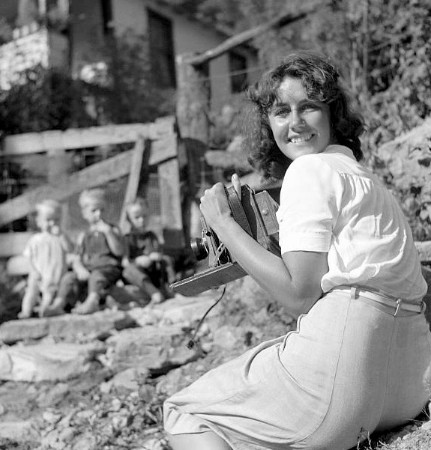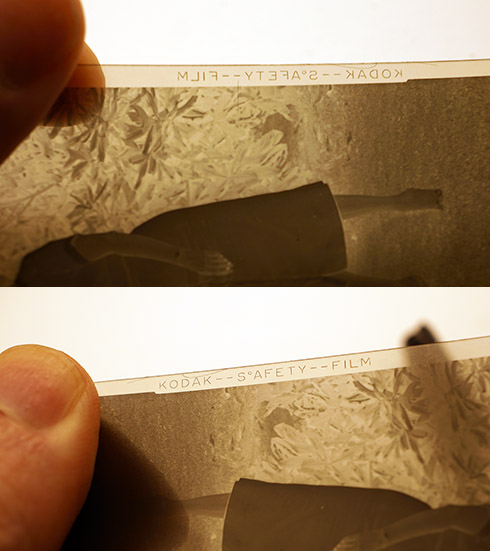


Framed or unframed, desk size to sofa size, printed by us in Arizona and Alabama since 2007. Explore now.
Shorpy is funded by you. Patreon contributors get an ad-free experience.
Learn more.

- Tough Guys
- Lost in Toyland
- And without gloves
- If I were a blindfolded time traveler
- Smoke Consumer Also Cooks
- Oh that stove!
- Possibly still there?
- What?!?
- $100 Reward
- Freeze Frame
- Texas Flyer wanted
- Just a Year Too Soon
- WWII -- Replacing men with women at the railroad crossing.
- Yes, Icing
- You kids drive me nuts!
- NOT An Easy Job
- I wonder
- Just add window boxes
- Icing Platform?
- Indiana Harbor Belt abides
- Freezing haze
- Corrections (for those who care)
- C&NW at Nelson
- Fallen Flags
- A dangerous job made worse
- Water Stop
- Passenger trains have right of way over freights?
- Coal
- Never ceases to amaze me.
- Still chuggin' (in model form)
Print Emporium
Freeze Frame: 1940
![Freeze Frame: 1940 January 1940. "Marion Post Wolcott [last seen here] with Ikoflex and Speed Graphic in hand in Montgomery County, Maryland." Medium format negative by Arthur Rothstein for the Farm Security Administration. View full size.](https://www.shorpy.com/files/images/SHORPY-8b19319a.preview.jpg)
January 1940. "Marion Post Wolcott [last seen here] with Ikoflex and Speed Graphic in hand in Montgomery County, Maryland." Medium format negative by Arthur Rothstein for the Farm Security Administration. View full size.
Gaytees
She wasn't necessarily freezing in those rubber boots.
More Marion, Please!
I just can't get enough of Marion Post Wolcott.
A different angle
We've seen Ms. Wolcott from other vantage points as well. A cutie, indeed!

Re: Pleasant Lady
What a treat to see the delightful person on the other side of the photographs. We spend so much time scrutinizing their pictures here on Shorpy that it's definitely gratifying to see who's taking them.
My wife points out that her toes will be getting chilly in those thin rubber boots unless she's got big woollen socks on.
Boots
Unless she has on some heavy woollen socks, her feet will soon be getting cold in these uninsulated rubber rain boots.
Re Pleasant Lady: I agree, what a lovely cutie!
Pleasant Lady
This and earlier images of Ms. Wolcott posted make me think she has a very pleasant disposition and enjoyed what she was doing.
The Weston meter
I believe Ms. Wolcott has a Weston Photronic 650 exposure meter hanging from a lanyard, right next to her Zeiss Ikoflex. My much-later Weston Master V lived on a lanyard very similar.
Photographers' Dilemma
I know the feeling. The camera loaded and ready and it's winter and there's nothing to photograph, no matter how much you walk around looking for something.
I had a 2 1/4 x 3 1/4 Speed Graphic and a Leica F with bulk film, and a darkroom, as a kid.
But there's nothing out there.
Anti-Gravitational Threesome
Not only does this photo "color" the work and personas of Ms. Wolcott and Mr. Rothstein, it captures an invisible moment of time.
Moments after Mr. Rothstein said "watch the birdie" (or something similar), and Ms. Wolcott "smiled for the camera", and just as Mr. Rothstein released the shutter, along came a gust of wind.
The wind blew back the flap of Ms. Wolcott's coat. At the same time, the wind blew forward locks of her hair, causing her to shut (shutter?) her right eye in sync with Mr. Rothstein's shutter. All caught on a single frame of film.
An innocent, playful moment of two photographers and Mother Nature, caught forever on Kodak/Kadok film.
A touching image! Great Shorpy choice!
Imprint confusion
Confusion may be occurring because those familiar only with roll film and 35mm aren't aware that Kodak used a different convention with sheet film.
With sheet film, the "imprint" was embossed as was right-reading when you viewed the emulsion side. This would appear reversed on a proper print. This imprint is outside of the standard print area and not expected to be reproduced, though most holders allowed extra image to bleed into that area and Dave chooses to include it in his scans.
With roll films, 35mm, and other small formats, Kodak exposes the information in the light sensitive emulsion instead of embossing the plastic base. The convention here is different with the imprint being right reading when you are viewing the base side. It therefore prints as right reading when the image is printed correctly should it be included in a print, though it is again outside of the standard printing area.
Not to be Negative, But
@TomD: Possibly because the Eastman-Safety-Kodak imprint would be not-backwards on the negative, thus backwards on the positive print.
[Every negative (or any transparent sheet) has two sides you can read it from. One side will always be "backwards." If you flip the film over, the EASTMAN SAFETY KODAK is no longer reversed. The KODAK imprint and the photographic image are backwards relative to each other by design. The imprint shows you which side needs to face up (showing KODAK and not KADOK) when you put it in the enlarger, to keep your print from coming out backwards. Both the backward image and rightward KODAK reverse when they are projected through the enlarger lens, giving a rightward image and backward KODAK on the resulting print. - Dave]

Backwards AND forwards?
Wondering how the Shorpy watermark and the film disgnation are both backwards while the names on the cameras are correct? It's a mystery!
[Another mystery: What's a "disgnation"? - Dave]
























On Shorpy:
Today’s Top 5